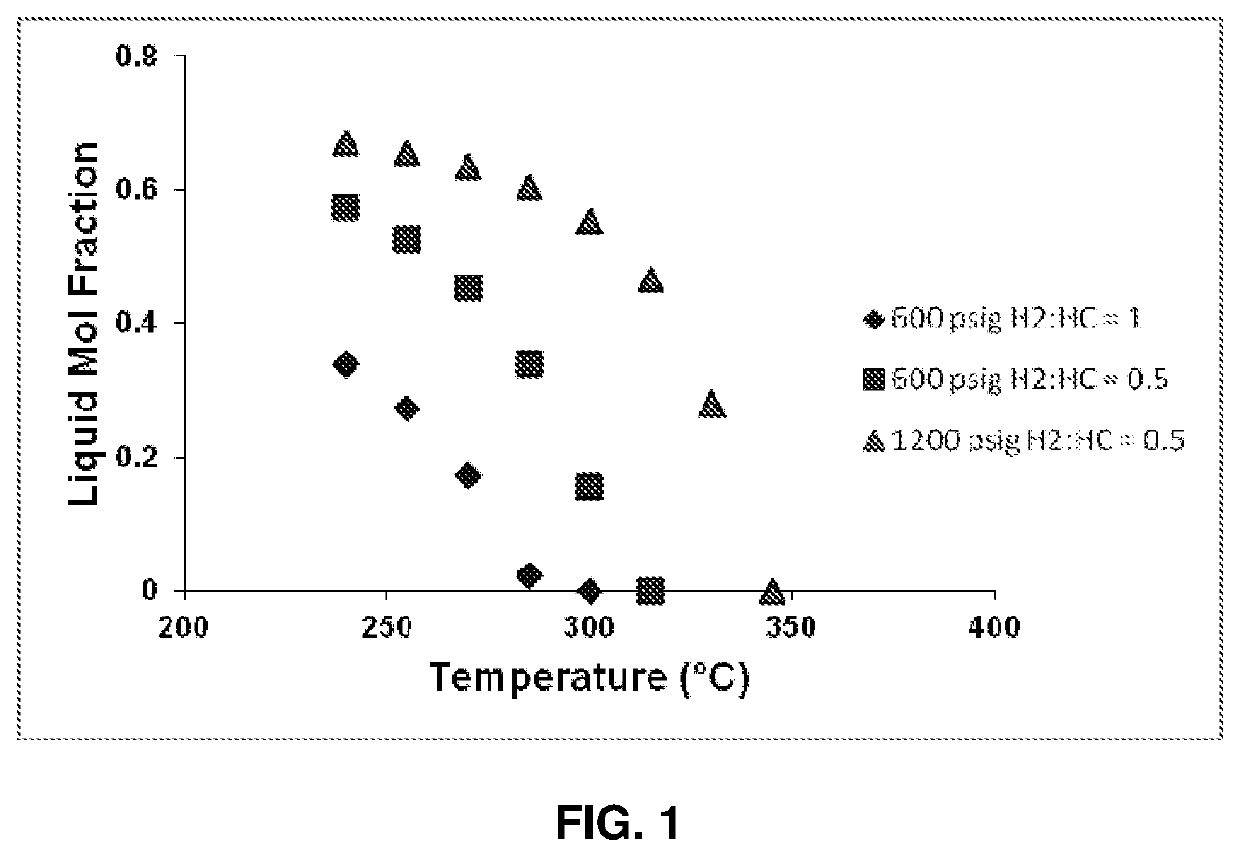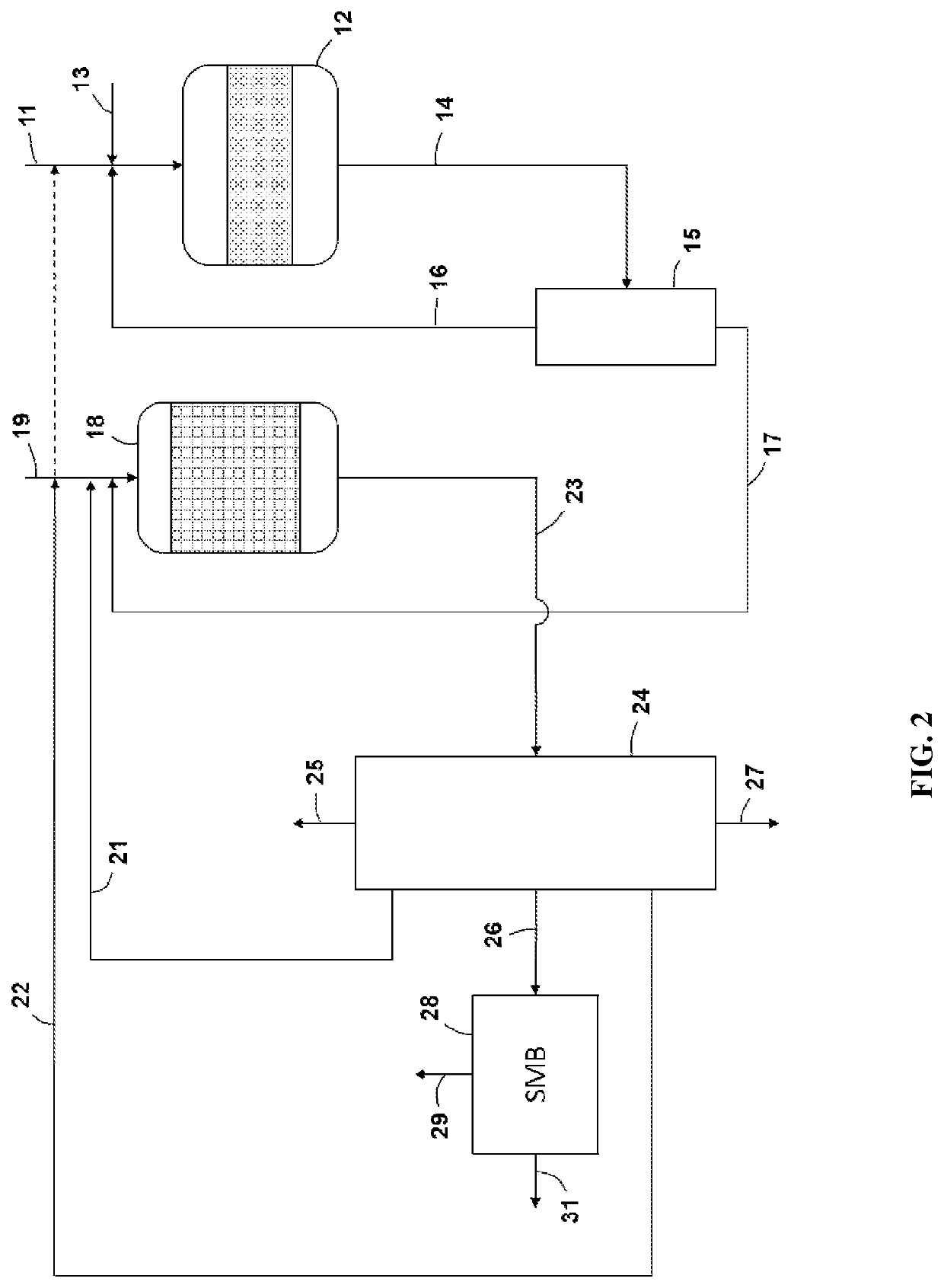Transalkylation of Heavy Aromatic Hydrocarbons
- Summary
- Abstract
- Description
- Claims
- Application Information
AI Technical Summary
Benefits of technology
Problems solved by technology
Method used
Image
Examples
Embodiment Construction
Definitions and Overview
[0013]As used herein, the numbering scheme for the Periodic Table Groups is as described in Chemical and Engineering News, 63(5), 27 (1985).
[0014]As used in this specification, the term “framework type” is used in the sense described in the “Atlas of Zeolite Framework Types,” 2001.
[0015]The term “aromatic” is used herein in accordance with its art-recognized scope which includes alkyl substituted and unsubstituted mono- and polynuclear compounds.
[0016]The term “catalyst” is used interchangeably with the term “catalyst composition”.
[0017]The term “ethyl-aromatic compounds” means aromatic compounds having an ethyl group attached to the aromatic ring. The term “propyl-aromatic compounds” means aromatic compounds having a propyl group attached to the aromatic ring.
[0018]The term “Cn” hydrocarbon wherein n is an positive integer, e.g., 1, 2, 3, 4, 5, 6, 7, 8, 9, 10, 11, 12, as used herein means a hydrocarbon having n number of carbon atom(s) per molecular. For exa...
PUM
| Property | Measurement | Unit |
|---|---|---|
| Temperature | aaaaa | aaaaa |
| Temperature | aaaaa | aaaaa |
| Temperature | aaaaa | aaaaa |
Abstract
Description
Claims
Application Information
 Login to View More
Login to View More - R&D
- Intellectual Property
- Life Sciences
- Materials
- Tech Scout
- Unparalleled Data Quality
- Higher Quality Content
- 60% Fewer Hallucinations
Browse by: Latest US Patents, China's latest patents, Technical Efficacy Thesaurus, Application Domain, Technology Topic, Popular Technical Reports.
© 2025 PatSnap. All rights reserved.Legal|Privacy policy|Modern Slavery Act Transparency Statement|Sitemap|About US| Contact US: help@patsnap.com


